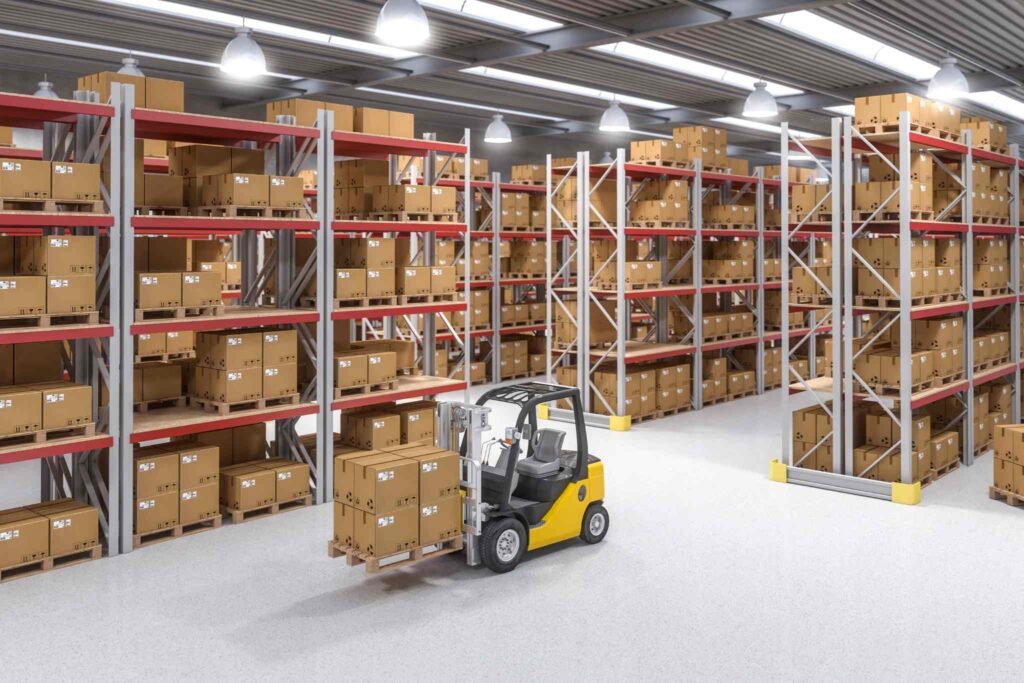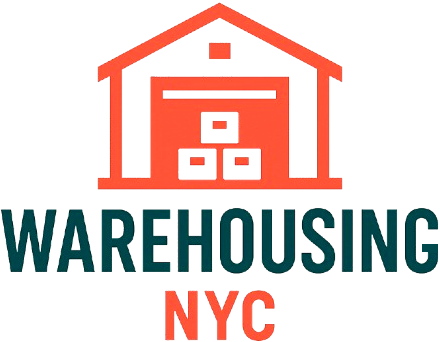Table of Contents
Key Takeaways
✔ The cost of a warehouse management system varies based on features, business size, and deployment type.
✔ The most common WMS options are on-premise, cloud-based, and hybrid systems.
✔ WMS costs are influenced by user licenses, customization, integrations, and operational complexity.
✔ Hidden expenses can include hardware upgrades, data migration, and future scalability fees.
✔ Reducing WMS costs can be done by comparing vendors, selecting only essential features, and negotiating contracts.
A warehouse management system (WMS) is an important tool that helps businesses organize, track, and control warehouse operations. It can make order processing faster, reduce errors, and improve overall productivity. A WMS is also proven to increase the number of orders a company can handle and boost operational efficiency. By giving real-time stock data, it helps with better inventory management, reducing the risk of running out of products or having too much stock.
Here are the key points to consider when looking at the cost of a WMS.

How Much Does a Warehouse Management System Cost
The average cost of a warehouse management system depends on factors like company size, number of users, and system features. When looking at warehouse software pricing, it helps to break down the numbers into clear and simple figures so decision-makers can better plan their budgets.
Research shows that the average budget per user for WMS software is about $10,000 over five years. This equals around $167 per user per month. This number gives a good starting point, but the final figure can be higher or lower depending on the setup and extra needs.
3 Common Types of Warehouse Management Systems
Understanding the different types of warehouse management systems (WMS) helps businesses choose the right fit for their needs and budget. Each type comes with its features, benefits, and costs. Knowing the differences can make it easier to plan a WMS cost breakdown and estimate the warehouse management system’s total cost of ownership before investing.
1. Standalone WMS
A standalone warehouse management system (WMS) is a specialized software for managing daily warehouse tasks. It suits small to medium businesses that need simple inventory control and order processing. While it can have a lower upfront price, the cost of implementing a WMS still depends on setup and features.
Key Features
- Inventory Tracking: Records stock levels and product locations to prevent shortages and overstock. It helps staff find items quickly, saving time and effort. Accurate tracking also supports better purchasing decisions.
- Order Management: Processes orders faster and reduces errors in picking and packing. This improves delivery speed and customer satisfaction. It can also connect with sales systems for real-time updates.
- Basic Reporting: Produces simple reports on stock movement and order completion. These reports help spot trends and issues early. Managers can use them to make quick, informed decisions.
2. Enterprise Resource Planning (ERP) Module-Based WMS
An ERP module-based WMS is built into a larger enterprise system that connects warehouse operations to finance, HR, and other business areas. This setup is powerful but often has higher warehouse software pricing and a greater warehouse management system total cost of ownership.
Key Advantages
- Full Integration: Links warehouse data with other departments for smoother workflows. It cuts down on duplicate data entry and reduces costly errors. All teams work from the same, accurate information.
- Centralized Data: Stores all business and warehouse details in one place. Managers can view and analyze information without switching systems. This improves decision-making speed and accuracy.
- Advanced Reporting: Delivers in-depth reports on performance and trends. These insights help plan future needs and cut costs. Reports can be customized for specific goals.
3. Supply Chain Management (SCM) Module-Based WMS
An SCM module-based WMS works within a supply chain management platform, giving control over goods from supplier to customer. It suits companies with complex logistics or multiple warehouses. The cost of implementing a WMS here can be higher, but the benefits cover the full supply chain.
Main Benefits
- End-to-End Visibility: Monitors products from supplier to final delivery. This helps detect delays and fix issues quickly. Greater visibility supports better customer service.
- Coordinated Logistics: Plans transport and distribution more effectively. It ensures goods move on time and at lower costs. This also reduces waste and storage needs.
- Supplier Collaboration: Shares real-time data with suppliers for better communication. This strengthens partnerships and improves reliability. Strong supplier ties can also lead to better pricing.
5 Key Factors That Affect WMS Cost
When looking at the cost of a warehouse management system, it helps to know what drives the price up or down. The following points break down the main factors that influence warehouse software pricing so decision-makers can plan better.
1. Number of Users or Licenses Required
The number of people who need access to the system directly affects the WMS cost breakdown.
- User Count: The more employees who will use the system, the more licenses will be needed, which increases costs. In some cases, companies pay per user, so adding even a few extra accounts can raise the budget quickly. Limiting access to only necessary staff can help control this expense.
- User Type: Admin users often require more advanced access, which can be more expensive compared to standard users. Advanced roles usually come with special permissions, reporting tools, and management features. Businesses should evaluate how many advanced roles are truly necessary to avoid paying for unused capabilities.
2. Level of Customization and Integrations
Custom features and the ability to connect with other systems can raise the cost of implementing a WMS.
- Custom Features: Tailoring the software to match unique workflows can be valuable but usually comes at a higher cost. These features may improve efficiency and reduce errors but take more time and resources to develop. Companies need to weigh the benefits of customization against the increase in upfront investment.
- Integrations: Connecting the WMS to other tools like ERP or shipping platforms adds convenience but also requires extra setup fees. Seamless data sharing between systems can speed up operations and reduce manual work. However, the more systems that need integration, the more complex—and costly—the setup becomes.
3. Size and Complexity of Warehouse Operations
The bigger and more complex the warehouse, the more robust the system needs to be, which impacts the warehouse management system total cost of ownership.
- Number of Locations: Managing multiple warehouses increases system requirements and costs. The WMS must handle real-time inventory tracking across different sites, which often needs stronger infrastructure. More locations also mean more hardware, training, and ongoing coordination expenses.
- Workflow Complexity: Special handling processes, varied product types, and advanced storage methods require more system capabilities. Complex operations often demand specialized modules for tracking, automation, or compliance. These added functions can significantly increase both the initial and long-term costs.
4. Implementation and Training Expenses
Getting the system up and running is a major part of the warehouse software pricing.
- Setup and Configuration: Initial setup ensures the system works for the specific warehouse setup, but it adds to the upfront cost. This stage can involve data migration, hardware installation, and workflow mapping. The more preparation and adjustments needed, the higher the setup bill will be.
- Employee Training: Training helps staff use the system effectively, which can take time and budget. Well-trained employees can work faster and make fewer errors, which benefits overall operations. Training sessions may need to be repeated for new hires or when new features are introduced.
5. Ongoing Maintenance and Support Fees
The total cost is not just about the purchase—it also includes ongoing support.
- Maintenance Costs: Regular updates and fixes keep the system running smoothly but come with recurring fees. These updates may include security patches, new features, or performance improvements. Skipping maintenance can lead to system downtime and inefficiency, which could be more costly in the long run.
- Support Services: Access to customer support ensures problems are resolved quickly, which can be part of a monthly or annual plan. Good support can minimize downtime and keep operations moving without interruption. The cost for premium or 24/7 support is typically higher but may be worth it for critical operations.

Additional Hidden Costs to Consider
It’s important to remember that the price isn’t just about the software itself. A complete WMS cost breakdown often reveals extra expenses that can add up over time. These hidden costs can affect the warehouse management system total cost of ownership, so they should be factored in from the start.
Hardware Upgrades (If Needed)
Sometimes, a company’s current equipment might not be enough to run a new system smoothly. This can lead to extra spending on updated tools and technology, which will be part of the warehouse software pricing.
- Server and Network Upgrades: Better servers and faster networks may be required for the WMS to operate efficiently. Without these, the system may experience delays or downtime, which can slow operations. In many cases, IT teams also need to adjust or replace existing infrastructure to handle higher data demands.
- Barcode Scanners and Mobile Devices: Modern WMS often work with handheld scanners or mobile devices, and older models may need to be replaced. Newer devices can process data faster, reducing errors in tracking inventory. The initial cost might seem high, but reliable equipment often leads to long-term savings.
- Storage and Backup Systems: Larger or more advanced storage solutions may be needed to keep data safe and accessible. A secure backup ensures critical information can be recovered in case of system failure. Businesses often invest in cloud-based backups or on-site servers for added security.
Data Migration Costs
Switching to a new system means moving data from old platforms to the new WMS. This step can be more complex than it seems and plays a role in the cost of implementing a WMS.
- Data Cleaning and Preparation: Old data may need to be organized or corrected before it can be transferred. Inconsistent or outdated information can cause problems once the new system is live. Cleaning data in advance helps ensure a smoother transition and reduces future errors.
- Transfer Services: Some companies pay for experts to handle the migration process, especially when large amounts of data are involved. Professional services can prevent costly mistakes during the transfer. This approach can also speed up the setup, helping operations return to normal faster.
- Testing and Verification: After migration, the data must be tested to ensure it’s correct and works properly with the new system. This stage is important for identifying and fixing issues before they affect daily operations. It also gives teams confidence that the new setup is ready to use.
Future Scalability and Expansion Fees
A business may start with a certain setup but later need to grow. Expansion costs should be considered early to avoid surprises and to get a clearer warehouse management system total cost of ownership.
- Adding More Users: As more employees need access, extra licenses may be required. Pricing often increases with each user, so planning for growth can help manage costs. Some vendors offer tiered pricing models that make scaling more affordable over time.
- Additional Warehouses: If a company opens new locations, the WMS may need to be expanded to manage them. This can involve setting up new servers, syncing data across sites, and training new staff. Such upgrades can increase both short-term and long-term costs.
- New Features and Integrations: Over time, more tools or system connections may be needed, which can come with additional fees. Adding integrations with shipping, accounting, or e-commerce platforms can improve efficiency. However, each integration may require extra development work and ongoing maintenance.
3 Ways to Reduce WMS Costs
Reducing the warehouse management system cost starts with smart planning and careful decision-making. Businesses can avoid overspending by focusing on the most important features and making sure they get the best value for their money.
1. Compare Multiple Vendors
Looking at more than one option gives a clearer view of the wms cost breakdown and helps spot the best deal. Every provider has different features, pricing models, and levels of support, so exploring a few choices is key.
- Request Detailed Quotes: Ask for a clear warehouse software pricing list that breaks down each cost, including setup, training, and monthly fees.
- Review Feature Lists: Compare which features are included and which are extra charges, as this can change the cost of implementing a WMS.
- Check References and Reviews: Learn from other users’ experiences to avoid vendors with hidden fees or poor support.
2. Choose Only Essential Features
It’s tempting to get every available feature, but unnecessary tools can quickly raise the warehouse management system total cost of ownership. Picking only the features that meet current needs can lower costs while still improving operations.
- Focus On Core Functions: Identify what is truly needed, like inventory tracking, order management, or reporting, instead of paying for extras that won’t be used.
- Avoid Overlapping Tools: Some features may already be covered by other software the business uses, so removing duplicates can cut the warehouse management system cost.
- Plan for Scalable Upgrades: Choose a system that can grow with the business, so new features can be added later without paying for them now.
3. Negotiate Contracts
Once a vendor is chosen, the final warehouse software pricing is often flexible. Negotiating terms can make a big difference in both upfront and ongoing expenses.
- Ask for Discounts: Vendors may offer lower rates for long-term agreements or multiple locations, which can reduce the cost of implementing a WMS.
- Clarify Maintenance Costs: Ensure that support, updates, and repairs are included or clearly priced to avoid surprise charges in the WMS cost breakdown.
- Lock in Pricing: Agree on fixed rates for as long as possible to keep the warehouse management system total cost of ownership stable over time.
Frequently Asked Questions
What is a warehouse management system called?
A warehouse management system, or WMS, is software that organizes and controls warehouse operations like receiving, tracking inventory, picking, packing, and shipping. It is also called warehouse software or inventory management software and is designed to improve efficiency, reduce errors, and provide accurate, real-time data.
How many types of inventory can you find in WMS?
A WMS can manage raw materials, work-in-progress items, finished goods, maintenance supplies, and returned or damaged products. It can also track batch numbers, serial numbers, and lot-controlled stock, helping businesses avoid overstocking, prevent shortages, and speed up order fulfillment.
How much does facility management software cost?
Facility management software can cost from a few hundred to several thousand dollars per month, depending on size, users, and features. Cloud-based versions have lower upfront costs but ongoing fees, while on-premise systems require larger initial investments. Extra charges may include setup, training, customization, and maintenance.
How to implement WMS?
Implementing a WMS includes assessing needs, selecting the right software, configuring it for the warehouse, training staff, and testing before launch. Vendor support is key to a smooth setup, and ongoing monitoring ensures it meets business goals.
What is the difference between WMS and FMS?
A WMS (Warehouse Management System) manages warehouse operations like inventory tracking, order fulfillment, and storage optimization. An FMS (Facility Management Software) oversees the broader management of a facility, including maintenance, space use, and equipment servicing. WMS focuses on warehouse logistics, while FMS covers overall facility operations.

Boost Warehouse Efficiency in New York, NY, with Expert Solutions!
Warehousing NYC By Best delivers professional warehouse management and storage solutions designed to enhance operations in New York, NY. With advanced systems and proven processes, every aspect of inventory tracking, order handling, and storage is managed with precision. From reducing errors to improving speed, the focus is on achieving reliable, cost-effective results for businesses in New York, NY.
Contact us today to discuss customized solutions that fit operational goals!

